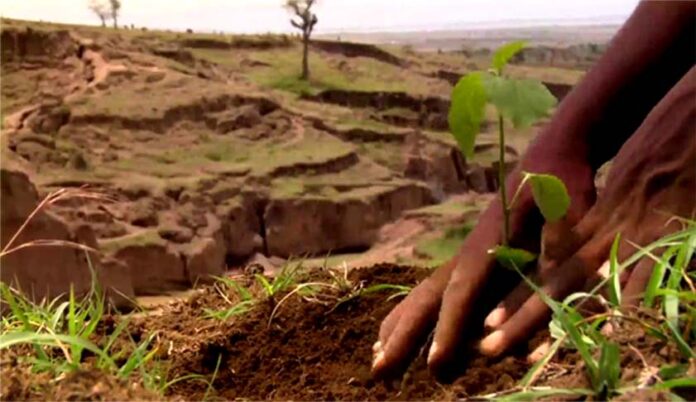The proposed changes in the form of the compensatory a forestation fund bill
The compensatory a forestation fund bill: capitalisation of nature
On 28th July, 2016, the Rajya Sabha unanimously passed the deeply troublesome compensatory afforestation fund management bill, 2016. The bill was earlier passed by Lok Sabha without much ado. The bill seeks to set up a compensatory afforestation management and planning authority which will have the trusteeship of Rs. 42000 Crore to be distributed to the states in their efforts to promote compensatory Afforestation.2 The bill is a result of a long period of contemplation regarding the need to stop the further receding of the forests. The MOEF has heaved a sigh of relief in a recent statement welcoming the bill as a much needed legislation
required to kick start all the stalled projects in relation to the restocking of the degraded forests of India. But the bill has received much flak from environmental groups and the forest dwellers for its incoherence and myopic vision. It comes in direct conflict with the Scheduled Tribes and Other Traditional Forest Dwellers (Recognition of Forest Rights) Act, 2006 (“Forest Rights Act”) and reflects and archaic colonial mind set
of dealing with the environment in a reductionist manner in isolation from the people that inhabit it.3
The Forest ecosystem is an important component of the natural environment of a country. India ranks 10th in the list of nations with most forest cover with 76.87 million hectares of forest and tree cover4. The Indian forests are home to 2-3% of the world’s biodiversity. Apart from supporting a huge diversity of fauna and
flora, Indian forests have the potential to help in carbon sequestration and act as carbon sinks and help in mitigation of climate change. Many people living in urban areas more or less depend on the forests for a variety of natural resources starting from timber to other raw materials. And there are other people whose livelihood is
intricately linked with the forests. Native forests trap enough rainwater to give birth to rivers and they support a complex web of life starting from the lichens and mosses to big animals. Forests also act a buffer against pest infestations, storms and other natural disasters5. There are various stakeholders involved who depend on forests for their varied needs. There are people who live inside the forests often as hunter gatherers
or shifting cultivators who depend on the forest resources on a subsistence basis. These include the Bodo tribes of Assam, the Gond tribes of MP, Munda tribe of Jharkhand etc. who constitute 8.2% of the population. Then there are agriculturists and livestock owners who live around the forests and depend on forest
supplements partly for subsistence and partly for economic reasons to improve the productivity of agriculture. There are also people who depend on forests for a variety of commercial activities like logging, mining etc. for their own profit generation.6
The recent state of forest report in India registered a continuous decline of tree cover from During 1951-1980, India has diverted 62% of its forest land for the purpose of agriculture which amounts to 42,380 sq km land. From then on, there has been no looking back on shrinkage on forests. The forest cover in India was 640819 square kilometres in 1987. The percentage of forest cover was 19% of the territory of the country. It gradually reduced by 0.23% of the land area in 1991. Then at a faster pace, the forest cover decreased by 0.08% by 1995.7 The government has in recent times claimed a substantial increase in the green cover of the country. But the bare truth has been veiled behind statistical jugglery and elusive numbers given by the forest administration of India. The forest survey of India biennial report on the forests declared an addition of 0.16% of forests8. In 2012, India seemed close to reaching the target of 33% forest cover at 692,000 sq km. But what we don’t realize is that Dehradun based forest survey of India has been using a very flawed definition of forest cover. The FSI breaks up land into 1 hectare plots and it deems any land which
has more than 10% of canopy cover as ‘forests’ without any regard to the questions of purpose of land, the kind of trees on the land, the ownership of the land etc. The definition is so expansive that it includes orchards, plantations, botanical gardens within ‘forests’.9 So, even places like Delhi’s Lodi gardens which is a mix of trees, grassy knolls, sand and dirt get covered under the wide definition of ‘forests’.10Native forests are clearly
distinguishable from plantation and a mere 10% canopy cover for their intricate interconnections and their evolution over millions of years. A 2011 paper titled ‘cryptic destruction of India’s native forests’, by researcher Priya Davidar and others, says area under plantations doubled between 1995 and 2005, from 146,200 sq km to 300,280 sq km and that these figures have been used by the Forest department to bolster their numbers.
The paper also says that native forests actually fell from 514,000 sq km to 390,000 sq km11.




